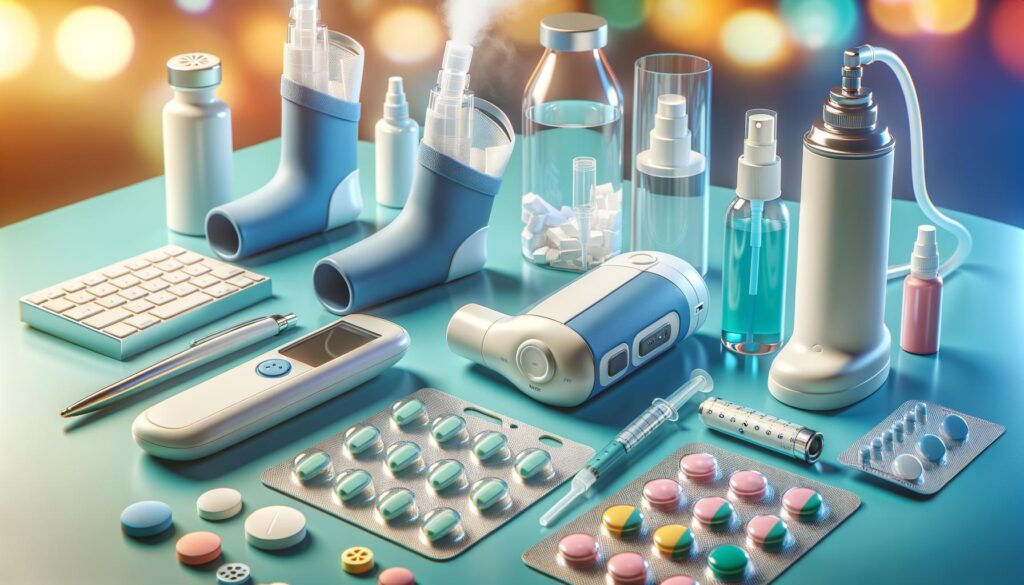Navigating Your COPD Devices: A Comprehensive Guide

Understanding COPD and the Role of Devices
Chronic Obstructive Pulmonary Disease (COPD) is a long-term condition that makes breathing difficult due to airflow obstruction. Managing COPD effectively often involves the use of specialized devices designed to ease symptoms and improve patients’ daily lives. These devices are engineered to assist in various aspects such as medication delivery, oxygen provision, and monitoring of lung function, enhancing overall respiratory health.
Common devices include inhalers, nebulizers, and oxygen concentrators, each serving a unique purpose. Inhalers allow for quick medication delivery directly to the lungs, while nebulizers transform liquid medicine into a fine mist, ensuring deeper lung penetration. Oxygen concentrators, on the other hand, provide a constant supply of oxygen, crucial for those with more severe COPD. Understanding the function and operation of these devices can empower patients to manage their symptoms more effectively.
Inhalers: Types and Usage
Inhalers are often the frontline devices in COPD management, providing a convenient and quick way to deliver medicine. There are primarily two types of inhalers: metered-dose inhalers (MDIs) and dry powder inhalers (DPIs). MDIs use a propellant to push the medication into the lungs, while DPIs rely on the patient’s own inhalation efforts.
When using an inhaler, proper technique is crucial to ensure maximum efficacy. Patients should:
- Shake the inhaler well before use (for MDIs).
- Exhale completely to empty the lungs.
- Place the inhaler mouthpiece in the mouth, seal lips around it, and inhale deeply while pressing the inhaler.
- Hold breath for a few seconds to allow medicine absorption.
Training on proper inhaler usage can significantly improve medication delivery and symptom control, making healthcare provider consultations vital.
Nebulizers: Deep Lung Medication Delivery
Nebulizers offer an alternative method of medication delivery by turning liquid medicine into a fine aerosol mist that is inhaled over several minutes. This is particularly beneficial for individuals who struggle with inhalers because of difficulty in timing their breath with the release of medication. Nebulizers are more suitable for critically ill patients or those requiring high doses of medication.
While nebulizers can be used at home or in a clinical setting, portable options offer increased flexibility and ease of use.
To use a nebulizer effectively, consider these steps:
- Assemble the nebulizer according to the manufacturer’s instructions.
- Place medication in the designated cup.
- Attach the mask or mouthpiece.
- Breathe normally through the mask or mouthpiece until all the medication has been used.
Oxygen Concentrators: Boosting Oxygen Levels
Oxygen therapy is another cornerstone of COPD management, particularly for patients with low blood oxygen levels. Oxygen concentrators are devices that extract and concentrate oxygen from the air, providing a consistent oxygen supply to patients.
These devices are often used for continuous oxygen supply and are more advantageous compared to oxygen tanks due to their ability to deliver unlimited oxygen using room air.
Patients may benefit from using oxygen concentrators when:
- They experience frequent breathlessness.
- Blood oxygen levels fall routinely below normal.
- They engage in physical activity and need an oxygen boost.
Always follow a healthcare professional’s guidance when using an oxygen concentrator to ensure safety and efficacy.
Monitoring Devices: Keeping Track of Your Health
In addition to medication and oxygen devices, monitoring devices play a crucial role in COPD management, allowing patients to keep track of their lung function and oxygen levels. Peak flow meters and pulse oximeters are commonly used for this purpose.
Peak flow meters measure the speed of air exhaled from the lungs, helping to monitor changes in breathing patterns. Regular use can help patients identify early signs of exacerbation, prompting timely medical intervention.
Pulse oximeters are non-invasive devices that clip onto a finger to measure blood oxygen levels and heart rate. Understanding oxygen saturation levels can assist patients in managing their physical activities and recognizing when to adjust their oxygen therapy.
Conclusion: Choosing the Right Device for Your Needs
Effectively managing COPD often involves using a combination of devices tailored to an individual’s specific health needs. Understanding these devices can improve daily life by offering better symptom control and enhancing the effectiveness of the prescribed treatment plan.
Regular consultations with healthcare providers can ensure that patients receive the appropriate training and adjustments necessary for proper device usage. As technology advances, new devices continue to emerge, offering promise for even more improved COPD management and quality of life.
